HIIT is a highly effective fat-burner when performed correctly- but how do you know if you’re doing it right and whether or not it’s working to help you reach your fitness goals?
Common signs that HIIT is being done right and is working include; heavy breathing, increased heart rate, significant sweating, and muscle soreness. Increased appetite after a workout, improved general fitness, and observable fat loss are also common signs that HIIT is being performed correctly.
When I first started doing HIIT, I spent weeks treading water with no results to show for.
Why?
Because I wasn’t doing it properly!
Learn how to avoid my mistake!
Here are 11 telltale signs that you’re working hard enough in your HIIT workouts, based on personal experience and research.
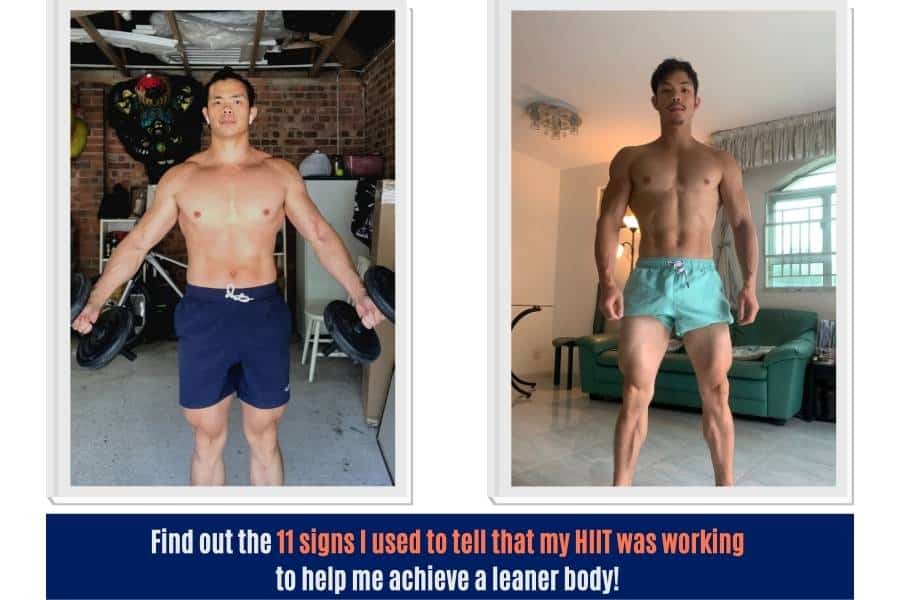
1) Nose-Only Breathing Becomes Difficult
An effective HIIT workout should significantly increase the breathing rate. At the start of a HIIT workout, breathing will often start to become deeper and heavier. And during the peak of a HIIT workout, an individual will often find it difficult to breathe using just the nose.
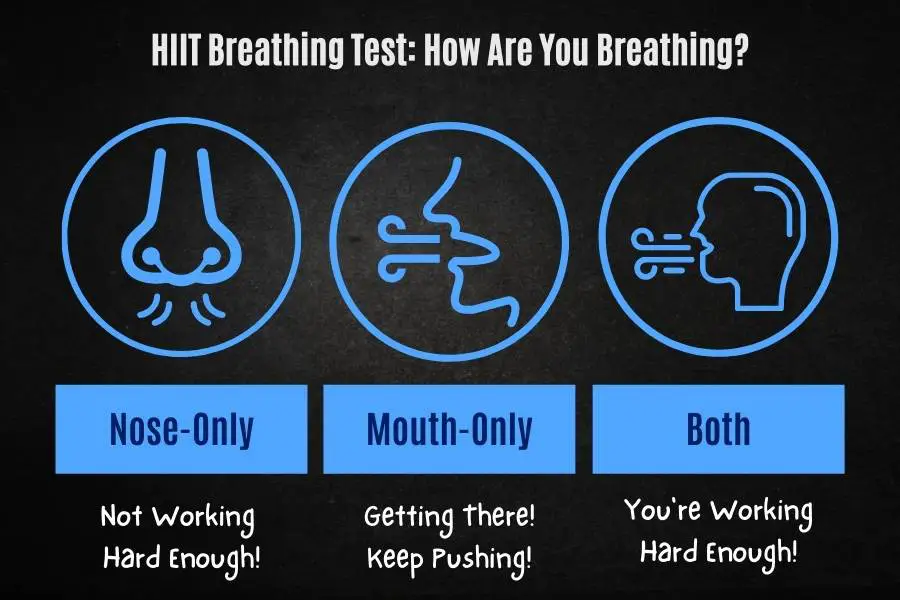
I know I’m doing HIIT right because it leaves me gasping for air within 5-10 minutes. My lungs literally feel like they’re about to burst and my muscles really burn during an intense session!
That’s the whole point of this type of training- to do as much work as possible in the shortest amount of time.
So let’s say you’re 10 minutes into a 20 minute HIIT workout:
If you’re still able to comfortably breathe through just the nose, then this is a big sign that your HIIT workout isn’t working as well as it should be.
2) Noticeable Increase In Perspiration During HIIT
Heavy sweating is a common indicator of a good HIIT workout. Sweat is often first seen around the head, back, and armpits. Sweating is the body’s natural cooling response to an exercise-induced rise in body temperature. So it’s normal for an intense workout to bring about heavy perspiration.
During a heavy workout, I’ll often find sweat dripping onto the floor.
Disgusting I know.
But at least I know my HIIT workout is working as it should!
Generally speaking, you should begin to notice a rise in body temperature, and the first signs of perspiration, within 5 minutes of your HIIT session.
This heat and sweat can even continue for up to 30-60 minutes after your HIIT workout because your body takes time to shed residual heat.
If you don’t want gross sweat going all over your floor, then I highly recommend getting a cheap yoga mat from Amazon.
Now, people naturally sweat in different amounts because genetics plays a large part in the process.
But if you’re not at least starting to break a sweat during HIIT, then this could be a sign that you’re workout isn’t working.
3) Lactic Burn Can Be Felt During HIIT
When done right, HIIT workouts should induce a temporarily uncomfortable feeling in the muscles being worked. This is commonly called a “lactic burn”. A lactic burn is caused by the release and build-up of lactic acid by muscle cells in response to intense anaerobic activity such as HIIT.
For me, the lactic burn feels like an extreme sensation of muscle fatigue and soreness.
But other people also describe the sensation as cramp-like, tightness, and even minor pain.
The onset of this sensation is commonly referred to as “feeling the burn”.
And if you’ve ever done a HIIT class, you’ll have probably heard the phrase being shouted at you by the instructor!
This feeling should peak during the active bouts of HIIT exercise (i.e. when you’re not resting).
And as you begin to enter the resting interval, the burn should then start to subside.
But it’s not uncommon if the feeling doesn’t completely go away during a particularly intense bout of exercise.
So if you’re experiencing the lactic burn sensating during HIIT, then this is a good sign that you’re working at a high enough intensity!
4) Heart Rate Increases By 60% Or More
A successful HIIT workout should increase a participant’s heart rate to 70-90% of their maximum heart rate. For the average 30-year-old, this equates to between 130 to 170 beats per minute. This is one of the best indicators that a HIIT workout is being performed right.
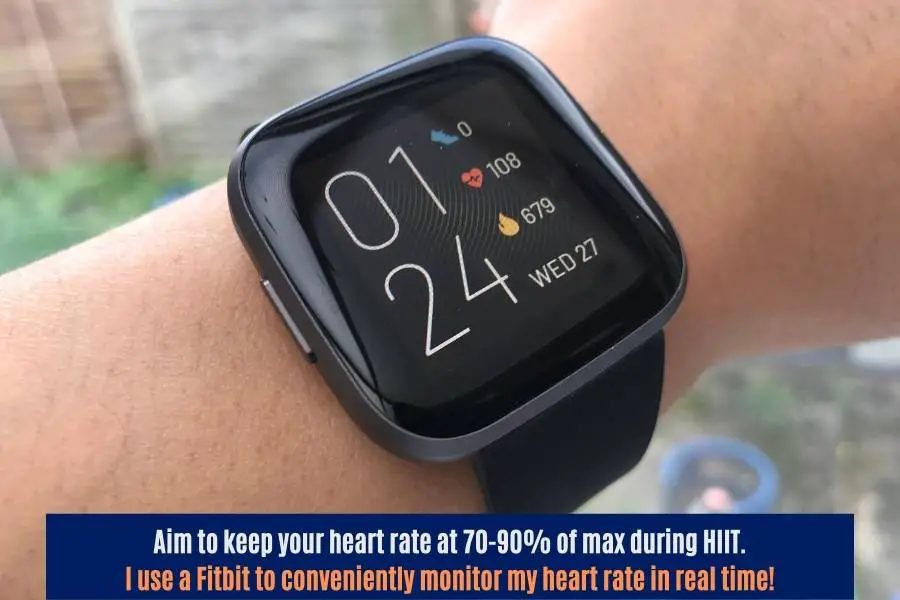
To determine your max heart rate- simply subtract your age from 220.
I’m a 30-year-old male and usually aim to keep my heart rate hovering around 140 beats per minute (75% of max heart rate) to keep me in the “fat-burning zone“.
If I’m feeling brave, then I might also ramp up the intensity and reach 170 beats per minute (90% of max heart rate) for a few bouts.
You should make a decision based on your own age and fitness levels.
But generally speaking, beginners should be working in the 70% zone for at least half of the HIIT workout to ensure an effective workout.
I use the Fitbit Versa to monitor my heart rate in real-time, but the Fitbit Inspire works just as well and is much cheaper.
5) Post-Exercise Muscle Soreness
Small amounts of muscle soreness after HIIT is normal and can be a good sign of an effective workout. But if muscle soreness is painful, then this could indicate the HIIT is not being performed correctly. Excessive muscle soreness could be due to working too hard in a HIIT workout.
My muscles usually feel slightly stiff and my strength seems depleted after a good HIIT workout.
This is mainly caused by a lactic acid build-up and muscle fiber breakdown during exercise.
Both of these processes are completely normal and it’s a sign that you worked hard enough during your HIIT workout.
But it shouldn’t get in the way of your daily activities.
So if you’re struggling to get off the couch because your body is so stiff, then this is a strong sign that you aren’t doing HIIT right.
You’re probably working too hard for your abilities.
For your next session, try decreasing the intensity by taking longer rests or decreasing the weight (if you’re doing HIIT with weights).
6) Endorphin Rush Onset After HIIT
Endorphins such as dopamine are often released in response to intense exercise. Therefore an endorphin rush can be a good sign of an effective HIIT workout. This often presents itself as feelings of euphoria after a workout is finished, but it can also happen during training.
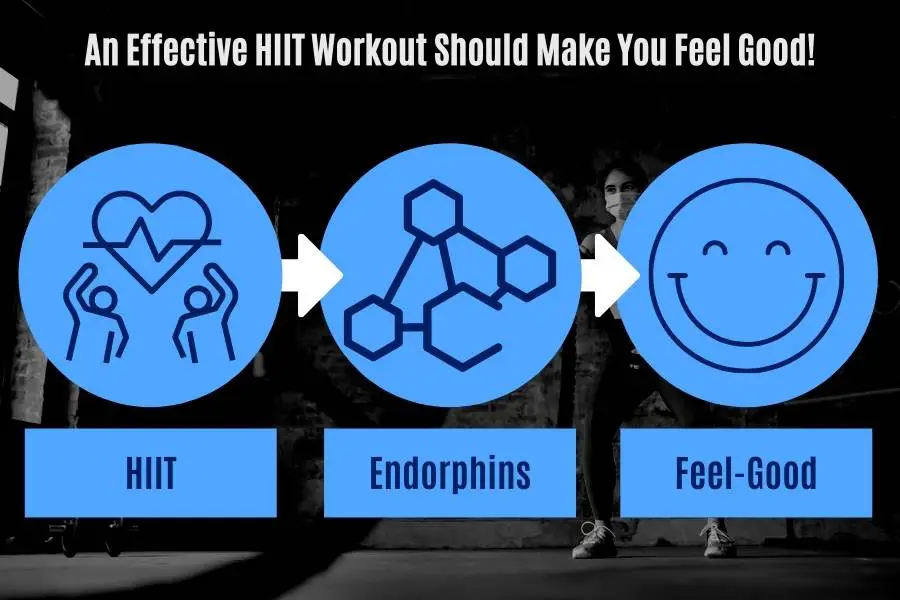
Also known as a “runner’s high”, this rush of natural feel-good hormones is why a lot of people feel great after exercising.
And it’s one of the main reasons why I love doing HIIT!
In fact, this study has indicated that HIIT is one of the best types of exercise for driving the endorphin response.
So whilst you may be going through hell during the workout itself, chances are you’ll feel great afterward.
And if you’re not, then this could be a sign that you are not working hard enough during your HIIT session.
7) Noticeably Increased Appetite Within 2 Hours Post-HIIT
Generally speaking, HIIT suppresses appetite during a workout and stimulates hunger after the workout. This happens because ghrelin, an appetite-stimulating hormone, is inhibited during HIIT. But ghrelin is released after a workout to promote hunger and replace calories expended during a workout.
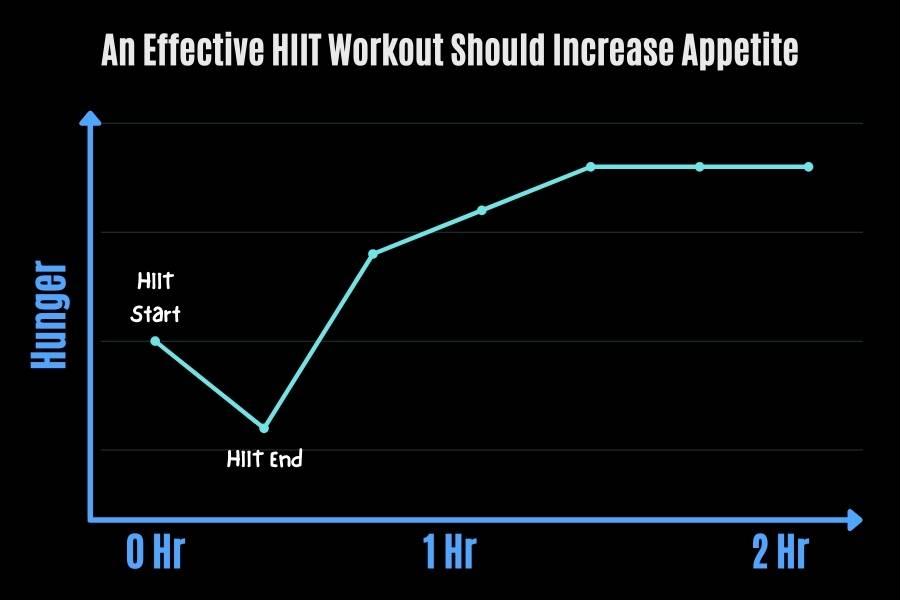
Put simply- you shouldn’t feel hungry during HIIT.
But afterward, it’s not uncommon to feel ravenous!
I found that the more work I put into my HIIT workouts the hungrier I get after the workout has finished.
This feeling of hunger usually starts within 30 minutes after a workout has finished, and peaks between 1 to 2 hours.
This doesn’t happen when I put in a half-assed effort.
So if you aren’t feeling hungry after HIIT, then this could be a sign that the workout hasn’t been effective and you should try working harder next time!
8) Daily Activities Become Easier
HIIT is an effective training method for increasing general fitness. This is because HIIT exercises usually challenge the entire body in different aspects of fitness including strength, power, endurance, and cardio. As a result, HIIT should also make everyday activities generally easier to perform.
I found that within a month of starting my HIIT program, daily menial activities like walking up the stairs and carrying shopping bags became noticeably easier.
My muscles didn’t tire as fast as they would have before.
If you’re working hard in your HIIT, then you should also see the same benefits.
And if you’re not, then it may be a sign that your training is not as effective as it could be.
You may also be interested in my other article for 7 benefits of doing HIIT!
9) Consistent Weight Loss In A 1 Month Period
Generally speaking, fat loss can be seen within 1 month of starting a HIIT program. However, the rate at which someone loses fat will also be largely determined by a calorie deficit. Expending more calories than are consumed is essential for an individual to lose weight.
I personally lost 15lbs of fat in 3 months by doing a dumbbell HIIT program.
The first signs of weight loss started to appear in month 1.
Be careful how you weigh yourself though.
I like to take an average across 7 days to give a weekly weight. This means my numbers aren’t skewed by natural body weight fluctuations that come as a result of daily food/water intake.
If you’re working hard enough at HIIT, you should see this weekly average decrease within the first month.
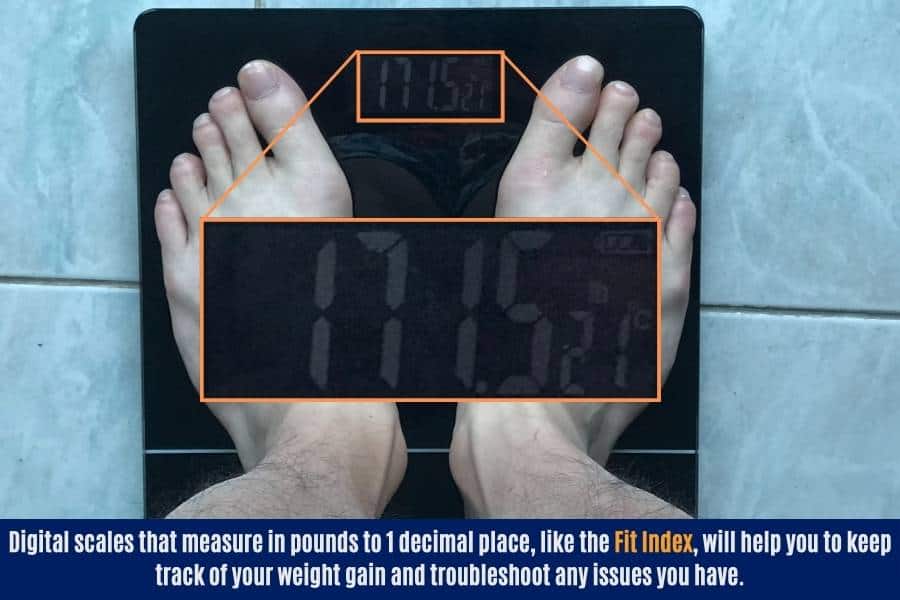
Most people have a decent set of body scales at home. And if you don’t, then you can pick one up for cheap at the shops!
If you’re interested in how I lost weight by doing HIIT with weights, then you can check out my other article for a complete guide on doing HIIT with dumbbells.
10) Hip To Waist Ratio Decreases
HIIT is generally effective at lowering fat in the abdominal and hip regions. Therefore an effective HIIT program should lead to a decreased hip to waist ratio which can be first seen within a month of starting a HIIT program. However, fat loss is also dependent on a calorie deficit.
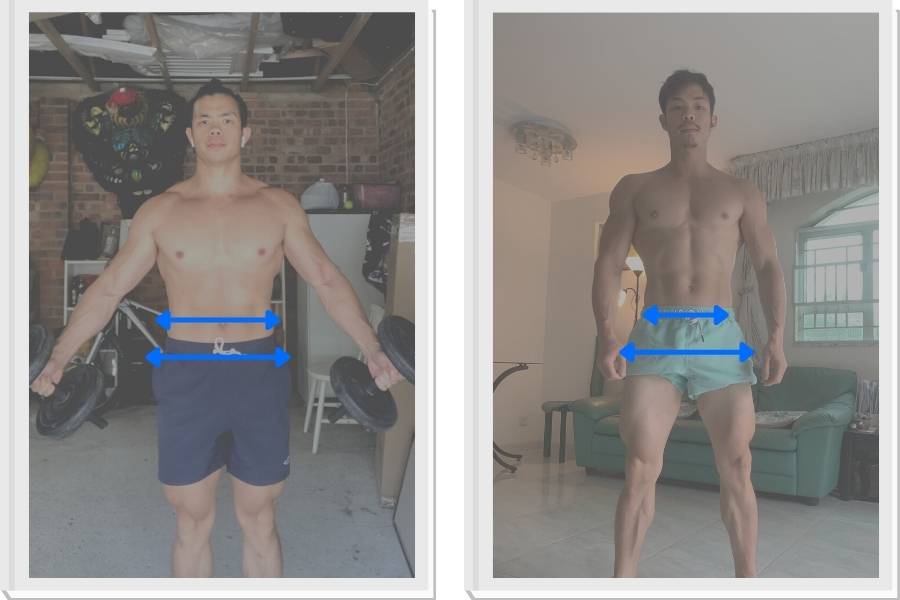
I lost just over 30mm from my waistline in 3 months, with the first signs of a slimmer waist first appearing within the first month of starting my dumbbell HIIT program.
I used this cheap tape measure to take measurements.
As a result, my hip:waist ratio decreased, and this transformed my sausage-like torso into a defined mid-section.
So if you’re working at the right HIIT intensity, there’s no reason why you shouldn’t be able to see similar results.
Just remember to combine your training with a sensible diet for the best results.
During this period, my meals mainly consisted of whole foods, fresh meat, fish, complex carbs, and fruit/veg.
Most importantly, I was in a 5-10% daily calorie deficit (which wasn’t too stressful and relatively sustainable).
If you’re interested in doing HIIT with weights at home, you may be interested in my other post for 11 of the best dumbbell HIIT Tabata exercises!
11) Noticeably Faster Recovery During And After HIIT
When performed correctly, a HIIT program should get progressively easier with time. This is due to cardiovascular, strength, and endurance adaptions in response to the intense workload of HIIT. As a result, individuals should see faster recovery from HIIT exercises over time.
Look I ain’t gonna sugar coat things- if you’re doing HIIT properly it should feel nigh unbearable, especially during the beginner stages.
But the good news is it gets much easier as the weeks go by.
Within a couple of months, you’ll probably reach a stage where it becomes so easy that you may need to find ways of making it harder.
This progression is a very good sign that you’re working hard enough on your HIIT program.
When you reach this stage, you could add free weights to increase intensity. I like dumbbells because they’re cheap and convenient to use.
If this is something you’re interested in, then you can check out my other post on the best dumbbells for HIIT workouts.
How To Make HIIT Harder And More Effective
Great- so you’ve been working hard on your HIIT workouts and it’s time to ramp up the intensity.
Here are some ways to make your HIIT exercises harder:
- Decrease rest interval between exercises.
- Increase the duration of exercise bouts.
- Add free weights to your exercises (I like to use dumbbells but kettlebells are also great).
- Focus on fully contracting the muscle in weighted HIIT exercises.
- Concentrate on explosive muscle contractions.
These techniques will make your HIIT more effective by increasing your cardiovascular and power output.
As a result, you can expect to burn more calories and build a leaner and more defined physique.
Your six-pack may even start making its debut appearance!
If you would like to know what HIIT can do for you, then you may be interested in my other article which explains HIIT can help you to build muscle, lose, fat, and get ripped!
Conclusion
I’ve shared 11 signs that your HIIT workout is working and being done right.
If you observe more than half of these signs, then chances are you’re doing HIIT is effective
So keep doing what you’re doing to torch that fat!
And if you aren’t working as hard as you should be, then you can try my tips to make your HIIT workouts harder.
How many of my signs do you spot in your own workouts?
Feel free to send me a message if you have any questions! You can find my details on the “contact us” page.
You may also be interested in the downloadable Kalibre Blueprint PDF which details exactly how I gained 40lbs of lean muscle (it’s 100% free!). It details the exact exercises and nutrition (with printable worksheets) I used to go from skinny to ripped!
Thanks for reading guys!
Peace Out,
Kal
(Biochemistry BSc, Biomedical Sciences MSc, Ex-Skinny Guy)


